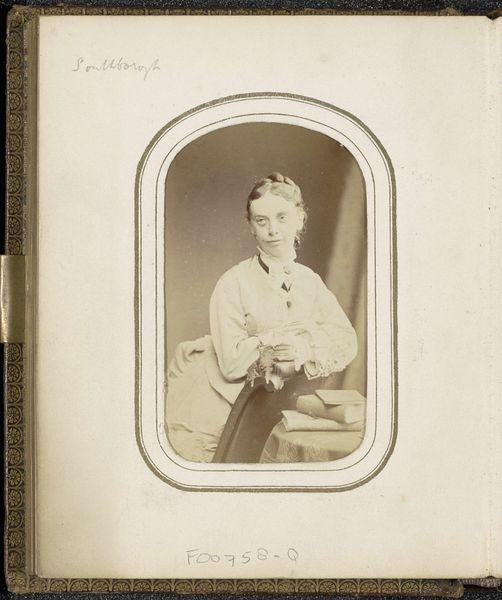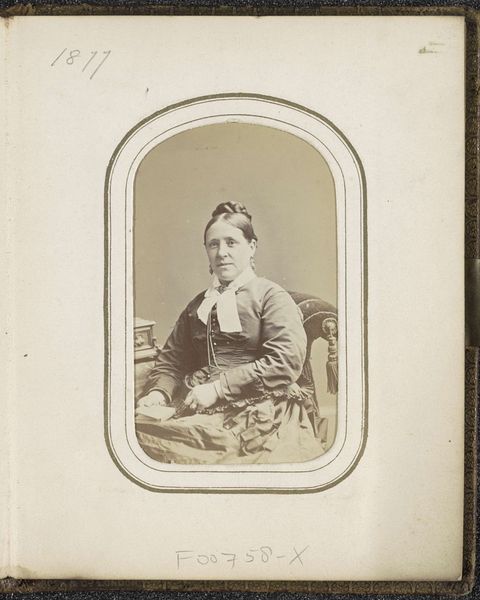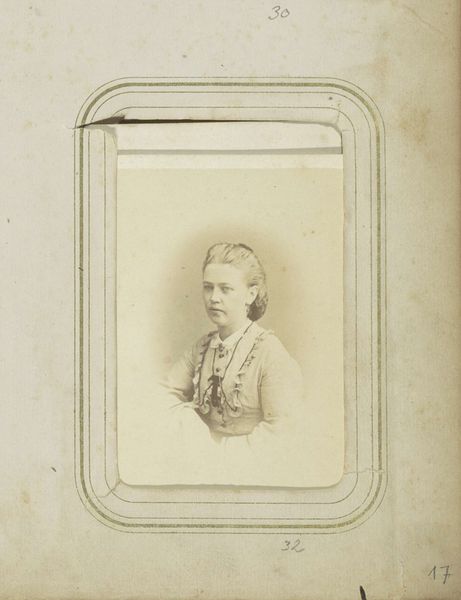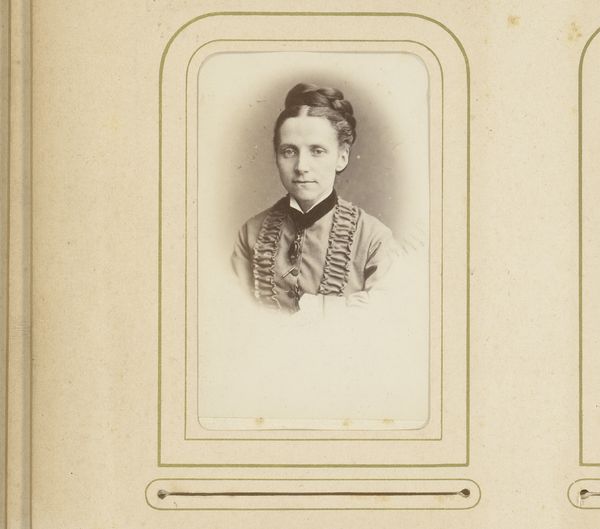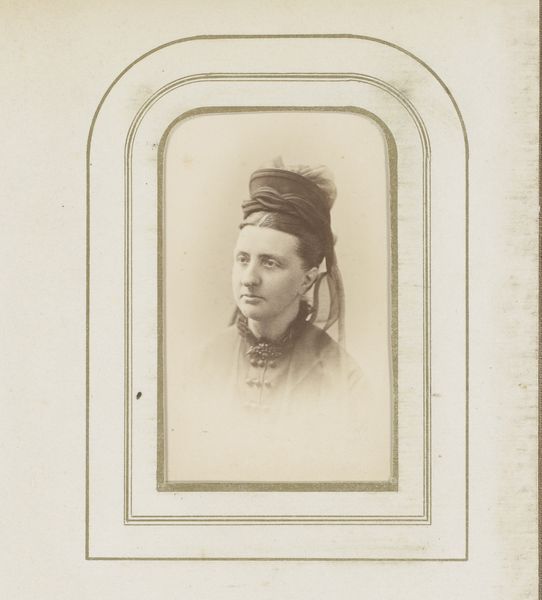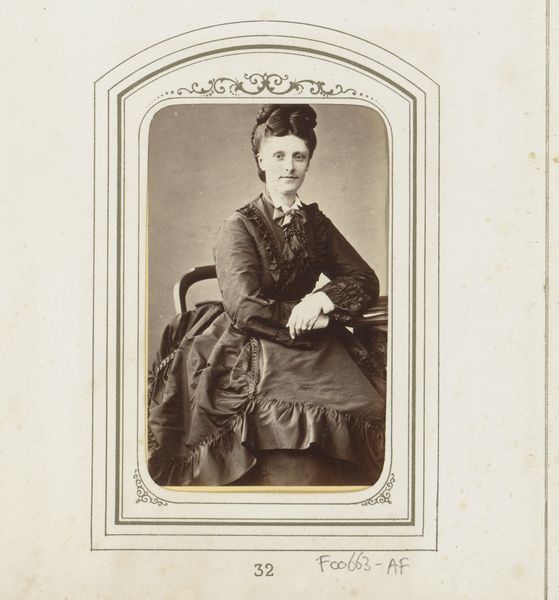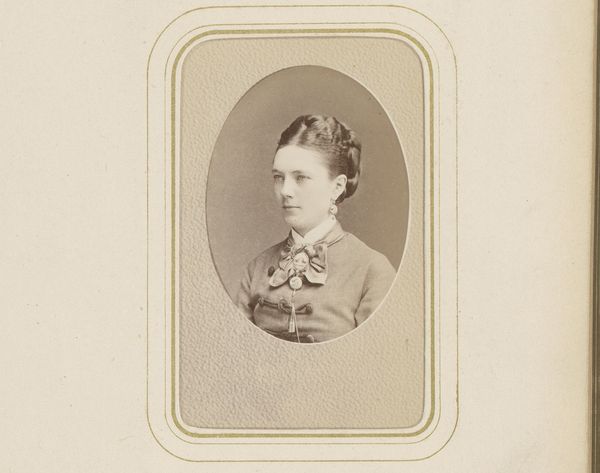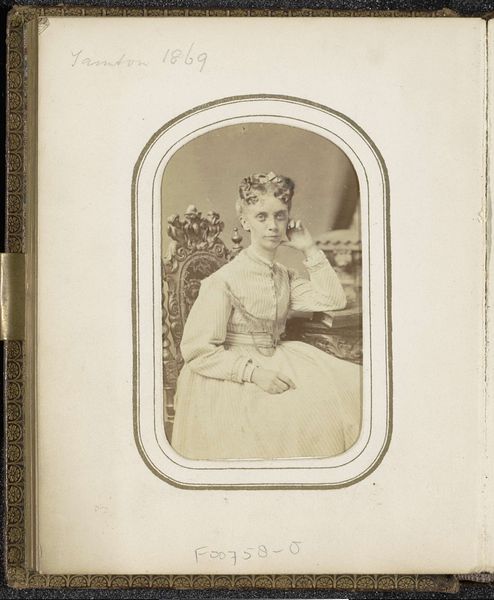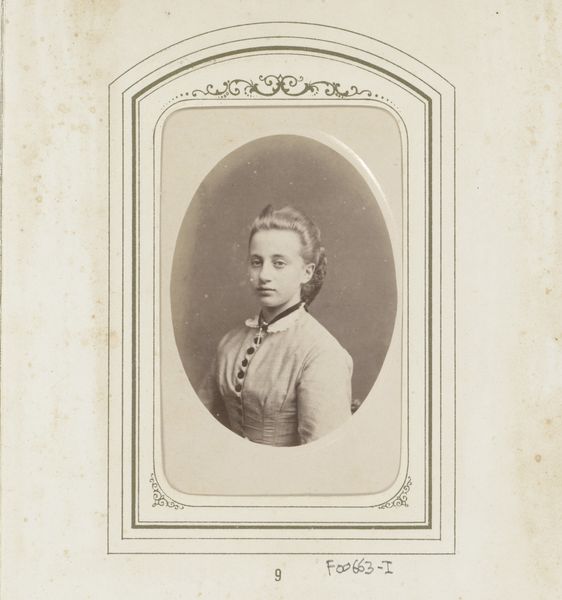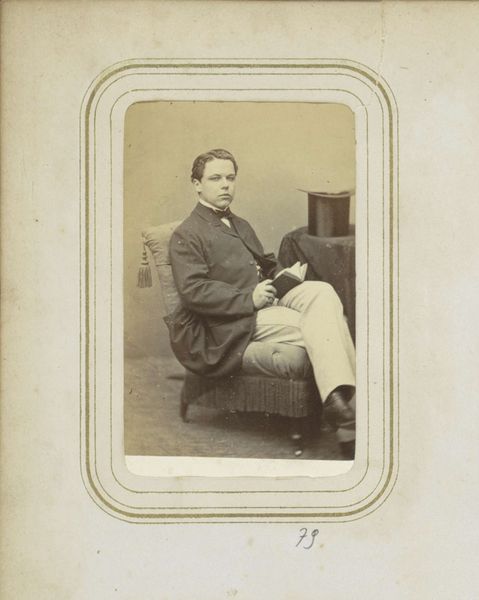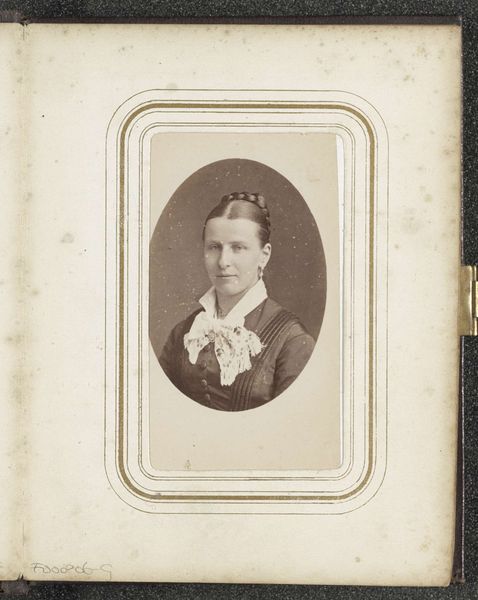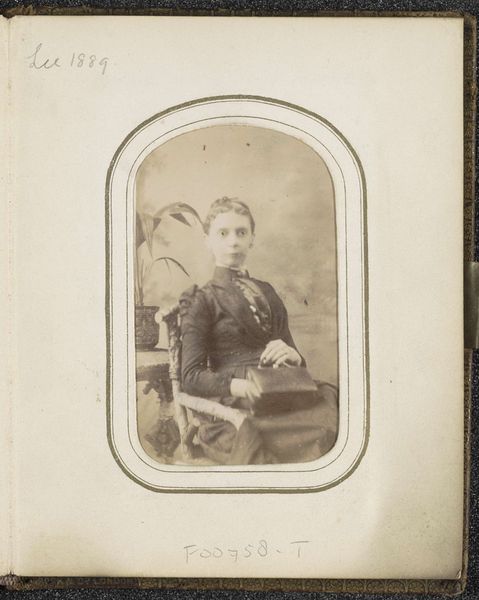
Dimensions: height 86 mm, width 51 mm
Copyright: Rijks Museum: Open Domain
Editor: This is a really interesting photo. It's titled "Portrait of a Woman Holding a Note," and it's by George Glanville, created sometime between 1875 and 1879. I find it incredibly intimate, despite being so formal. What catches your eye about it? Curator: The immediate impression is of societal constraints. Photography during this period wasn’t just about capturing an image, but about projecting an image of social standing. Notice how her attire, the very elaborate dress, the lace, all signify a certain class. How do you think that affects our interpretation of the woman's interior life? Editor: I hadn’t thought about it like that. I just assumed it was standard portraiture. So, you’re saying the social context heavily influences how the image is created and received? Curator: Precisely! These portraits, which were costly to produce, weren’t just for personal mementos. They were also displayed publicly, acting almost as a declaration. Consider also the symbolic weight of that note she holds; is it a love letter? A business document? The mystery plays into the societal roles she inhabits. Editor: So the open-endedness of the note invites viewers to project their own understanding of gender roles and social dynamics of that period? Curator: Absolutely. It highlights the power of photography in shaping narratives. Glanville isn't just taking a photo; he's constructing a story within a specific socio-political context. I wonder what stories are woven by viewers now? Editor: It’s fascinating to think how the image, seemingly simple, holds so many layers of meaning embedded in the society it came from. Thank you. Curator: Indeed. Analyzing the social underpinnings of art like this unveils so much about both the artwork and ourselves.
Comments
No comments
Be the first to comment and join the conversation on the ultimate creative platform.
